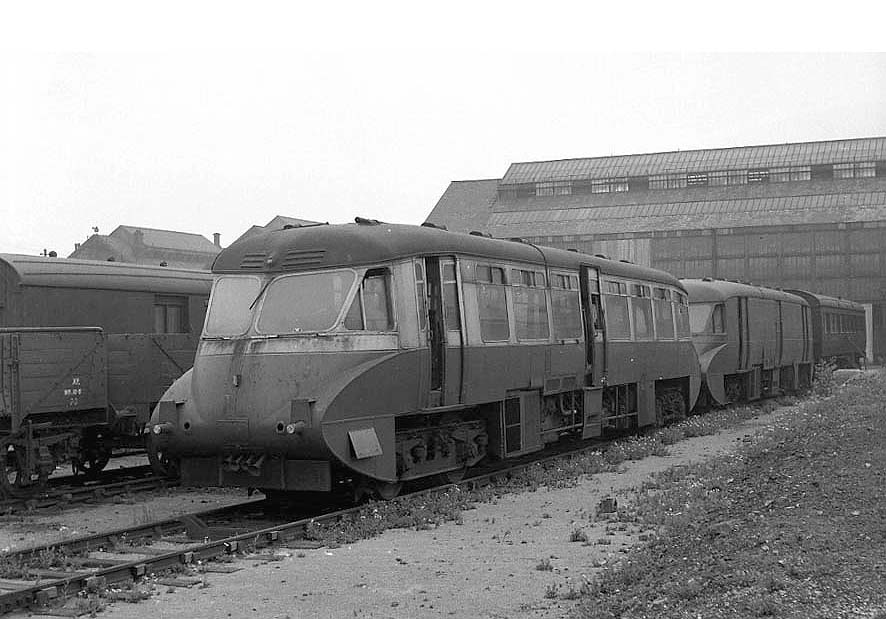 |
|
GWR Route: Banbury to Wolverhampton
GWR Route: North Warwickshire Line
Tyseley Shed: gwrt2365
 |
Ex-Great Western Railway Railcars No 13 and No 17 are seen
in dirty condition alongside Tyseley shed in March 1960. Railcar No 13 was a 70
seater unit and was built in March 1936 weighing 29 ton 10 cwt and remained in
service until August 1960. Railcar No 17, designed to be an express parcels car
with a capacity of 10 tons, was built in April 1936 weighing 28 tons 17 cwt and
had been withdrawn a year early, in January 1959. The story of the Great
Western railcar began with its inventor, CF Cleaver of Hardy Railmotors
Limited. Hardy's were a subsidiary of the Associated Equipment Co. Ltd. (AEC),
and they had provided petrol and diesel powered shunting locomotives in
addition to four- and six-wheel drive lorries and tractors through their
associated company, the Four Wheel Drive Lorry Company. Cleaver was a man of
considerable zeal and realised that the established and successful 130 bhp
six-cylinder AEC diesel engine that was used in London buses and numerous other
commercial vehicles, was capable of powering a lightweight self-contained
railcar, especially if it utilised streamlining that was popular at the time.
The body of the first prototype was broadly based on the popular 'Flying
Hambuger' diesel unit of Duetsche Reichsbahn, but after wind tunnel tests were
carried out at the Chiswick laboratory of the London Passenger Transport Board,
the body was transformed into a sleek streamlined design with a waisted frontal
area.
Using the 8.85 litre diesel engine, drive was passed to a
five-speed pre-selective gearbox with a fluid flywheel to drive to a pair of
axleboxes on one side of the railcar. The 69 seater body was built by Park
Royal Coachworks of Willesden, another AEC subsidiary, and measured 62 feet in
length and 9 feet in width. Maximum speed was 63 mph with control shared
between the ends of the railcar. Before completion, the railcar was bought by
the Great Western but prior to entering service, it was displayed at the
International Commercial Motor Transport Exhibition at Olympia in November
1933. Such was the railcar's popularity at the exhibition, it was estimated
that 35,000 people or 53.25 per cent of those that paid for admission to
Olympia, visited the railcar. Great publicity, something that the Great Western
thrived on, was also given to the railcars movement from Olympia to the GWR
sidings at Brentford when the exhibition closed. Continued
Technical history courtesy of The Great Western Archive:
www.greatwestern.org.uk
Courtesy Steve Davies of
www.britishrailwayphotographs.com
 back back

|
